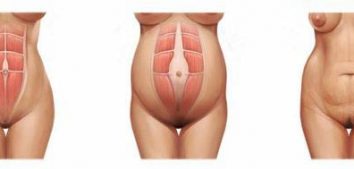
Pain-Free Back– How to Take Care of Your Posture?
How many hours a day do you spend sitting? Office work, eating, driving a car or sitting on the bus, resting after work in front of the TV. These hours add up quite a lot, don’t they? Today I will try to answer the question how sitting can cause back pain?
Did you know that pain in the lumbar spine affects school-age children? One Polish study showed that approximately 40% of students reported pain symptoms. Can you guess the reason? Unfortunately, these children, compared to the rest of their peers, spent their free time in a much more passive way.
Change Your Position and Move While Working
Currently, physiotherapists agree that the most important thing is to move while working. It doesn’t matter whether you are sitting or standing. Change your position. Get up, stretch your body. It is not true that when working, your back should be straight all the time. Any long-term body position tires our muscles. What you can do for your health is to get up from your desk every 30-60 minutes to walk around the room, get a coffee, bend a few times, relax your neck and shoulder girdle.
Specialized Chairs and Desks
Our body adapts to the position it stays in for a long time. Specialized chairs and desks have many advantages. It is worth keeping in mind that the body will do so if it can rest. So even the best chair will not be a cure for pain if you do not move and exercise to strengthen the muscles of the back, buttocks and shoulder girdle.
Desks that are height-adjustable are gaining in popularity. We can spend part of our time at work in a sitting position and part of it standing. It is important to use a footrest when standing to relieve the spine. Switching directly to 8 hours of work in a standing position will not be a good solution. Even more so if you have little physical activity outside of work. Why? Because the muscles and joints are not prepared for this position. It’s best to do the transition gradually.
Swiss Ball
I think that a lot of people usually associate it with pregnant women. However, it’s actually a very good way to relieve the spine during everyday work. Sitting on such a ball helps strengthen deep structural muscles. Continuous work is required to maintain stability while sitting. Of course, this may also result in excessive tension of the working muscles. That’s why it’s good not to rely only on the ball. It may be an ideal solution for someone, but for others it may not be enough. The ball will be a good and healthy break from sitting while working but it is not worth limiting yourself only to it.
Where Should You Place the Keyboard and Monitor?
Make sure the computer is in front of you and the chair. Prolonged torso twisting will cause muscle imbalance. As a result, the muscles on one side of the body will be excessively tense and on the other side they will be relaxed. This is a simple way to cause overload back pain. Even if you sit in front of the monitor, but often repeat movements only in one direction (e.g. reaching for the printer), this may also cause overload for the body and, as a result, pain symptoms.
Is Training Immediately After 8 Hours of Sitting a Good Idea?
It depends on the kind of movement we choose. Running, cycling, or intense training at the gym may not be the best solution. Such activity will be a shock to the body that has practically not moved for a long time. Take your time, go for a walk, do a good warm-up, and then start training.
However, there are forms of movement that our spine likes very much. I fell in love with Pilates myself, so you can find Pilates training in my Diet & Training by Ann application (HERE). You can read more about the advantages of this activity HERE. Pilates is a great way to strengthen deep muscles, nourish the spine and prevent and fight back pain. Of course, if pain already occurs, before starting exercise, you should consult a physiotherapist to determine the source of the pain and what exercises are not recommended in your specific case.
Keep moving all day long
Don’t forget to stay active throughout the day! Moving the spine, twists, bends and rotations allow for nourishment, flexibility and better regeneration of the entire spine. All this allows you to maintain good mobility, both in terms of muscle function and intervertebral discs.
Maybe you can get off the bus earlier, leave your car one street away from the office, go for a 15-minute walk in the morning? After work, instead of switching to the couch potato mode, choose active rest: walking, stretching, rolling, yoga, or the previously mentioned pilates.
A Set of Simple Exercises for a Healthy Back
- make a few calm movements, pointing your chin towards your chest;
- rotate your head several times to the side, looking to the right or left;
- perform several shoulder circles back and forth;
- stretch one arm above your head and, exhaling, bend over, leading your hand diagonally up – stretch the side of your body and then change sides;
- straighten your back, slightly tighten your abs, place your hands on the back of your head, open your chest and lower your shoulders. With an exhale, rotate your torso to the side, hold the position for a few seconds, and then change sides;
- stand up and, rolling your spine, bend over, one vertebra at a time, while breathing out. With the next exhalation, return to standing position, also performing a calm movement, straightening the spine one vertebra after another.
Summary
I hope you will implement the tips provided in this article today! Remember that it is worth taking care of your body, and exercise is the best and free form of health prevention. Keep it regular and go for small changes that make a big difference over time. Think about where you can start and do it!
Bibliography:
- Józefowski P., Kołcz-Trzęsicka A., Żurowska A., “Zdrowy kręgosłup”, Warszawa, Wydawnictwo SBM Sp. z o.o., 2015, ISBN 978-83-7845-875-3
- Kędra A., Dariusz Czaprowski D., Częstość występowania bólu kręgosłupa a sposób spędzania czasu wolnego dzieci i młodzieży. Med Og Nauk Zdr. 2013;19(2):183–187
- Nowotny-Czupryna O., Czupryna K., Skucha-Nowak M., Szymańska J., Ustawienie kręgosłupa podczas pracy w pozycji siedzącej a dolegliwości bólowe u stomatologów i asystentek medycznych. Med Pr 2018;69(5):509–522










Comments No Comments
Join the discussion…